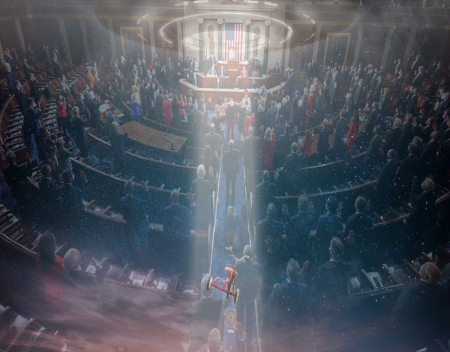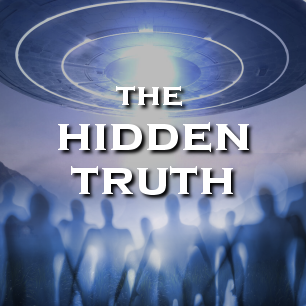Blog Categories
- African Incidents
- Atlantis Incidents
- Australian Incidents
- Belgian Incidents
- Bermuda Triangle Incidents
- Brazilian Incidents
- Canadian Incidents
- Chinese Incidents
- European Incidents
- France Incidents
- Ghosts
- Giants
- Italy Incidents
- Japanese Incidents
- Middle East Incidents
- Portugal Incidents
- Project Serpo
- Puerto Rico Incidents
- Russian Incidents
- Sasquatch
- Scandinavia Incidents
- Spanish Incidents
- UFOs
- United Kingdom Incidents
- United States Incidents
Halloween UFO Report Downplays Sightings

Right in time for Halloween, U.S. intelligence agencies were due on Oct 31st, 2022 to deliver a classified progress report on UFOs to Congress, with an unclassified summary of the report expected to be posted online later in that week. Earlier that month, NASA also announced the 16 members of its new unclassified independent team, consisting of prominent scientists, an astronaut and a science journalist, to look at the phenomenon from “a scientific perspective.”
The report comes after Congress called for the establishment of a permanent office to study UAPs (unidentified aerial phenomena, the government’s new and improved term for UFOs) at the Pentagon last year and then held its first public hearing on the topic in more than 50 years this spring. That hearing discussed an unclassified report issued by a Department of Defense task force in 2021.
Many UFO investigation proponents like myself were underwhelmed by the Pentagon’s unclassified 2021 report, which offered an explanation for only one of the 144 incidents the department said were being investigated. But at least it correctly acknowledged that it couldn’t rule out any explanation, including extraterrestrial origins. After all, in some of the incidents, Navy pilots publicly stated that they’d encountered exotic objects that were “not of this world” and “accelerated like nothing I’ve ever seen.”
But leaked details and communications from officials ahead of the Halloween report and the announcement of NASA’s new team suggested that some in the government are eager to put the issue to rest without a full, open-minded investigation — just as it did in the last open attempt to get to the bottom of the phenomena back in the 1960s.
It’s particularly frustrating that NASA seems to be drawing its conclusions before even really getting started. In its tweet announcing the UAP panel members, NASA declared: “There is no evidence supporting the idea that UAP are extraterrestrial in origin.” This statement seems to prematurely signal its conclusions so no one will be surprised when the final report repeats the same finding.
Meanwhile, the headline of a New York Times article based on what it said was classified information from the intelligence report read, “Many Military U.F.O. Reports Are Just Foreign Spying or Airborne Trash.” Nodding to the Halloween timing, the author of the article, Julian Barnes, tweeted what might have been the subtext: UFOs are nothing “spooky or hypersonic” — in other words, just ordinary things, there’s nothing to see here and it’s time to move on.
What the Times headline ignores are the specific cases that are, well, actually spooky and hypersonic. Of the 144 incidents, the Pentagon identified 18 incidents that exhibited unusual flight characteristics. Five observables, elucidated by Lue Elizondo, the whistleblower who was until 2017 in charge of a secret Pentagon program studying UFOs, are sudden and instantaneous acceleration with no visible signs of propulsion, anti-gravity lift, hypersonic velocities without signatures, low observability (or cloaking) and trans-medium travel (going from the ocean straight into the air, for example).
Unfortunately, there is precedent for the Defense Department, scientists and the media playing down reports of UFOs rather than prioritizing truly open scientific inquiry. In the 1950s and 1960s, the Air Force established a UFO task force named Project Blue Book and commissioned an independent scientific study of the phenomena. Led by Colorado University professor Edward Condon, the final report of the study published in 1969 concluded that UFOs warranted no further study; the headlines it generated were used as justification to shut down Project Blue Book later that year.
But Northwestern University professor J. Allen Hynek, a key consultant on Project Blue Book, came forward to say that much of the work of the project was to debunk UFO reports rather than understand them. Hynek attacked the Condon Report, saying that its findings were “singularly slanted” because it only looked at easy-to-explain cases. Moreover, more than a third of the cases remained legitimately unexplained.
The accusation of cherry-picking data was repeated by others, including renowned atmospheric scientist James McDonald, who accused the committee of mostly being a whitewash, continuing a disinformation process started by the CIA in the 1950s to convince the public and scientists that UFOs were nonsense. McDonald also pointed to a memo leaked from the project administrator that assured his colleagues that the conclusion was predetermined.
There is now a danger that the NASA study, which is also supposed to be objective, may not live up to this scientific ideal. For one thing, NASA’s study is only looking at unclassified data. “Most of the interesting data from the past is classified,” Harvard astronomer Avi Loeb told me in an email. Loeb is head of the Galileo Project, one of the few academic projects that’s trying to generate new data on UFOs.
While some of NASA’s top brass and study team members have tried to reassure the public that they don’t have pre-conclusions, others have already raised concerns. Loeb points out: “Some members of the panel expressed explicit views against scientific research on UAP. Their selection raises concern about the neutrality of the panel.”
For NASA’s panel to avoid stigmatizing the study of UFOs and spur the science needed for a thorough investigation, my request to members is simple: Please try not to prejudge the conclusions of the study, which is what all science should be about. Furthermore, at some stage NASA will need access to the classified data.
It’s often said that those who don’t learn the lessons of history are doomed to repeat it. If government and academia don’t do so with UFOs, we may end up with another independent scientific panel in another 50 years, but be no closer to the truth.

Right in time for Halloween, U.S. intelligence agencies were due on Oct 31st, 2022 to deliver a classified progress report on UFOs to Congress, with an unclassified summary of the report expected to be posted online later in that week. Earlier that month, NASA also announced the 16 members of its new unclassified independent team, consisting of prominent scientists, an astronaut and a science journalist, to look at the phenomenon from “a scientific perspective.”
The report comes after Congress called for the establishment of a permanent office to study UAPs (unidentified aerial phenomena, the government’s new and improved term for UFOs) at the Pentagon last year and then held its first public hearing on the topic in more than 50 years this spring. That hearing discussed an unclassified report issued by a Department of Defense task force in 2021.
Many UFO investigation proponents like myself were underwhelmed by the Pentagon’s unclassified 2021 report, which offered an explanation for only one of the 144 incidents the department said were being investigated. But at least it correctly acknowledged that it couldn’t rule out any explanation, including extraterrestrial origins. After all, in some of the incidents, Navy pilots publicly stated that they’d encountered exotic objects that were “not of this world” and “accelerated like nothing I’ve ever seen.”
But leaked details and communications from officials ahead of the Halloween report and the announcement of NASA’s new team suggested that some in the government are eager to put the issue to rest without a full, open-minded investigation — just as it did in the last open attempt to get to the bottom of the phenomena back in the 1960s.
It’s particularly frustrating that NASA seems to be drawing its conclusions before even really getting started. In its tweet announcing the UAP panel members, NASA declared: “There is no evidence supporting the idea that UAP are extraterrestrial in origin.” This statement seems to prematurely signal its conclusions so no one will be surprised when the final report repeats the same finding.
Meanwhile, the headline of a New York Times article based on what it said was classified information from the intelligence report read, “Many Military U.F.O. Reports Are Just Foreign Spying or Airborne Trash.” Nodding to the Halloween timing, the author of the article, Julian Barnes, tweeted what might have been the subtext: UFOs are nothing “spooky or hypersonic” — in other words, just ordinary things, there’s nothing to see here and it’s time to move on.
What the Times headline ignores are the specific cases that are, well, actually spooky and hypersonic. Of the 144 incidents, the Pentagon identified 18 incidents that exhibited unusual flight characteristics. Five observables, elucidated by Lue Elizondo, the whistleblower who was until 2017 in charge of a secret Pentagon program studying UFOs, are sudden and instantaneous acceleration with no visible signs of propulsion, anti-gravity lift, hypersonic velocities without signatures, low observability (or cloaking) and trans-medium travel (going from the ocean straight into the air, for example).
Unfortunately, there is precedent for the Defense Department, scientists and the media playing down reports of UFOs rather than prioritizing truly open scientific inquiry. In the 1950s and 1960s, the Air Force established a UFO task force named Project Blue Book and commissioned an independent scientific study of the phenomena. Led by Colorado University professor Edward Condon, the final report of the study published in 1969 concluded that UFOs warranted no further study; the headlines it generated were used as justification to shut down Project Blue Book later that year.
But Northwestern University professor J. Allen Hynek, a key consultant on Project Blue Book, came forward to say that much of the work of the project was to debunk UFO reports rather than understand them. Hynek attacked the Condon Report, saying that its findings were “singularly slanted” because it only looked at easy-to-explain cases. Moreover, more than a third of the cases remained legitimately unexplained.
The accusation of cherry-picking data was repeated by others, including renowned atmospheric scientist James McDonald, who accused the committee of mostly being a whitewash, continuing a disinformation process started by the CIA in the 1950s to convince the public and scientists that UFOs were nonsense. McDonald also pointed to a memo leaked from the project administrator that assured his colleagues that the conclusion was predetermined.
There is now a danger that the NASA study, which is also supposed to be objective, may not live up to this scientific ideal. For one thing, NASA’s study is only looking at unclassified data. “Most of the interesting data from the past is classified,” Harvard astronomer Avi Loeb told me in an email. Loeb is head of the Galileo Project, one of the few academic projects that’s trying to generate new data on UFOs.
While some of NASA’s top brass and study team members have tried to reassure the public that they don’t have pre-conclusions, others have already raised concerns. Loeb points out: “Some members of the panel expressed explicit views against scientific research on UAP. Their selection raises concern about the neutrality of the panel.”
For NASA’s panel to avoid stigmatizing the study of UFOs and spur the science needed for a thorough investigation, my request to members is simple: Please try not to prejudge the conclusions of the study, which is what all science should be about. Furthermore, at some stage NASA will need access to the classified data.
It’s often said that those who don’t learn the lessons of history are doomed to repeat it. If government and academia don’t do so with UFOs, we may end up with another independent scientific panel in another 50 years, but be no closer to the truth.

